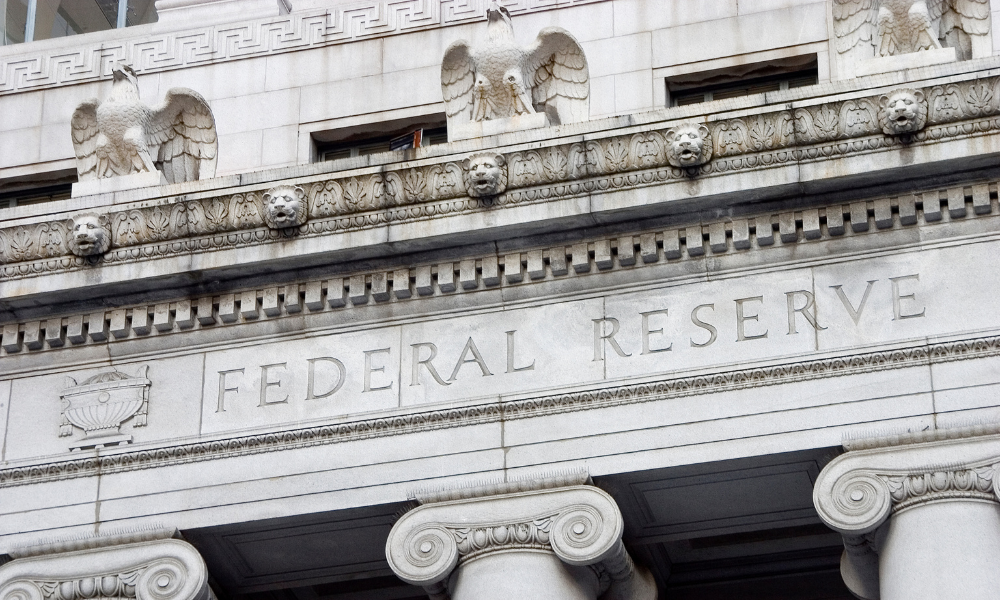Kevin Flanagan predicts how many times the Fed could cut this year

As the Federal Reserve reviews its options amid tumbling markets and a global trade conflict, Kevin Flanagan tentatively suggests the central bank will be making two cuts throughout 2025.
Before the Fed makes any rate cuts, it will first need to identify the actual impacts of US President Donald Trump’s sweeping tariffs on the US economy, says Flanagan. He suggests the first cuts could be seen in June, and certainly does not expect any cuts to be made in the first half of the year.
“Don’t rule June out,” said Flanagan, head of fixed income strategy at WisdomTree Funds. “I think the Fed wants to see concrete evidence of adverse impacts on the economy before they actually cut rates. And you probably won’t get that until the second half of the year, if at all.”
Trump’s tariffs have dictated the Fed’s inability to remain proactive on their rate decisions, according to Flanagan.
“The Fed is in reactionary mode right now. Rather than trying to be proactive and lead the markets, they're kind of hamstrung,” he said. “And I think that's a consistent message that you get, not just from the chairman, but from the underlying FOMC and even the non-voting members of the FOMC, that the Fed is not only data dependent they are District of Columbia, policy dependent.”
Flanagan says that while the Wednesday’s tariffs caused markets to tank, the announcements do at least provide some long-term clarity after months of speculation. But while Trump’s announcements may give some more insight into how tariffs will affect the market, he suggests the unpredictable nature of Trump’s policies will continue to create headaches for the Fed, who must pivot around ever-changing tariff decisions.
“I think as far as the markets are concerned, it's actually going to be beneficial, maybe regardless of what's announced, it's the fact that we may finally get some certainty,” Flanagan said. “It's going to be fluid, and I think that leaves the Fed in a challenging position, and why they're just going to wait and let the data come to them and make their adjustments.”
The fluid nature of Trump’s policy shifts forces Fed Chair Jerome Powell to keep his head on a swivel. However, Powell’s time dealing with Trump’s volatile decision making during his first administration gives him the experience needed to make bold decisions under difficult circumstances.
“I don't think Powell feels the pressure at all. If anything, the first experience kind of toughened it up for him so that he knows how to respond. And I think underscoring that point is how, on a number of occasions, Powell has actually gone out and been proactive,” he said. “So I think you get the sense that the Fed will be independent on this, and they're going to be very data dependent, so independent from the politics.”
US jobless claims have been significantly lower than in past recessions, leading Flanagan to believe that employment numbers will not be a substantive inflationary factor in the near future. He does suggest that Trump’s clampdown on immigration will cause wages to increase, though again does not see it causing immediate inflationary pressures.
“The Fed is looking at the jobs numbers, and so far, you're not seeing it in weekly jobless claims,” he said. “Weekly jobless claims is one of the 10 leading economic indicators, and it's still residing at levels that are about 100,000 below prior recessions over the last 40 years – pretty powerful when you talk about it from that vantage point.”
Flanagan says that while tariffs are inherently inflationary, the market was able to adjust during the months in between Trump’s election victory and his inauguration. This has led Flanagan to take the position that concerns surrounding inflation are overblown, though he believes the uncertainty surrounding inflation is another issue Powell must grapple with.
“This is Trump 2.0 not 1.0 and there was a very good chance that he was going to get re-elected. So if you're running a company here, did you not have some kind of contingency plans put in effect?” he said. “Maybe the impacts are going to be overblown to some extent, maybe what you've seen is some plans being put into place, so that these effects don't get exaggerated. That's the way that I will look at it, and that's why it's still another area of uncertainty that the Fed has to contend with. That's why they're going to wait and let the numbers come to them.”



